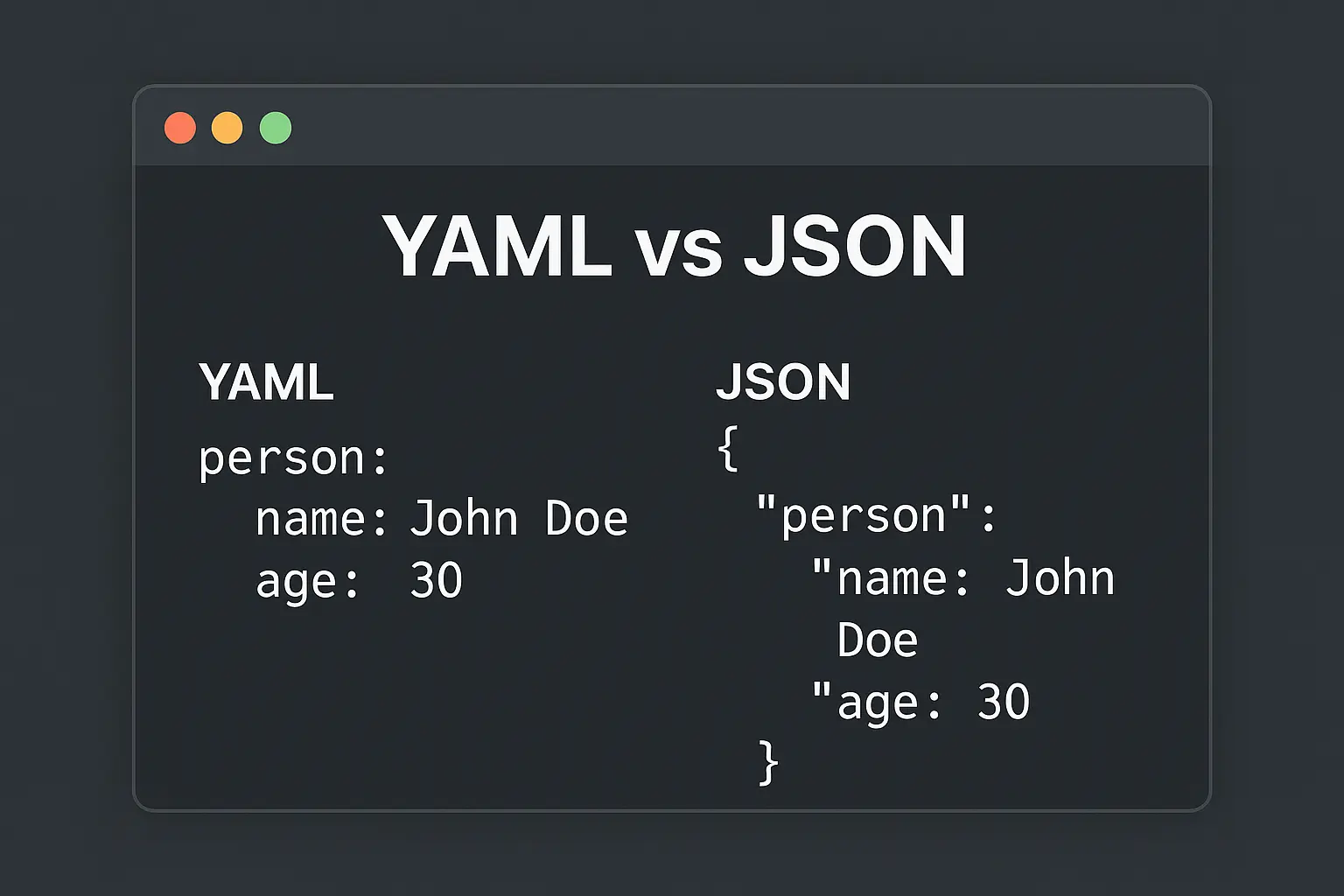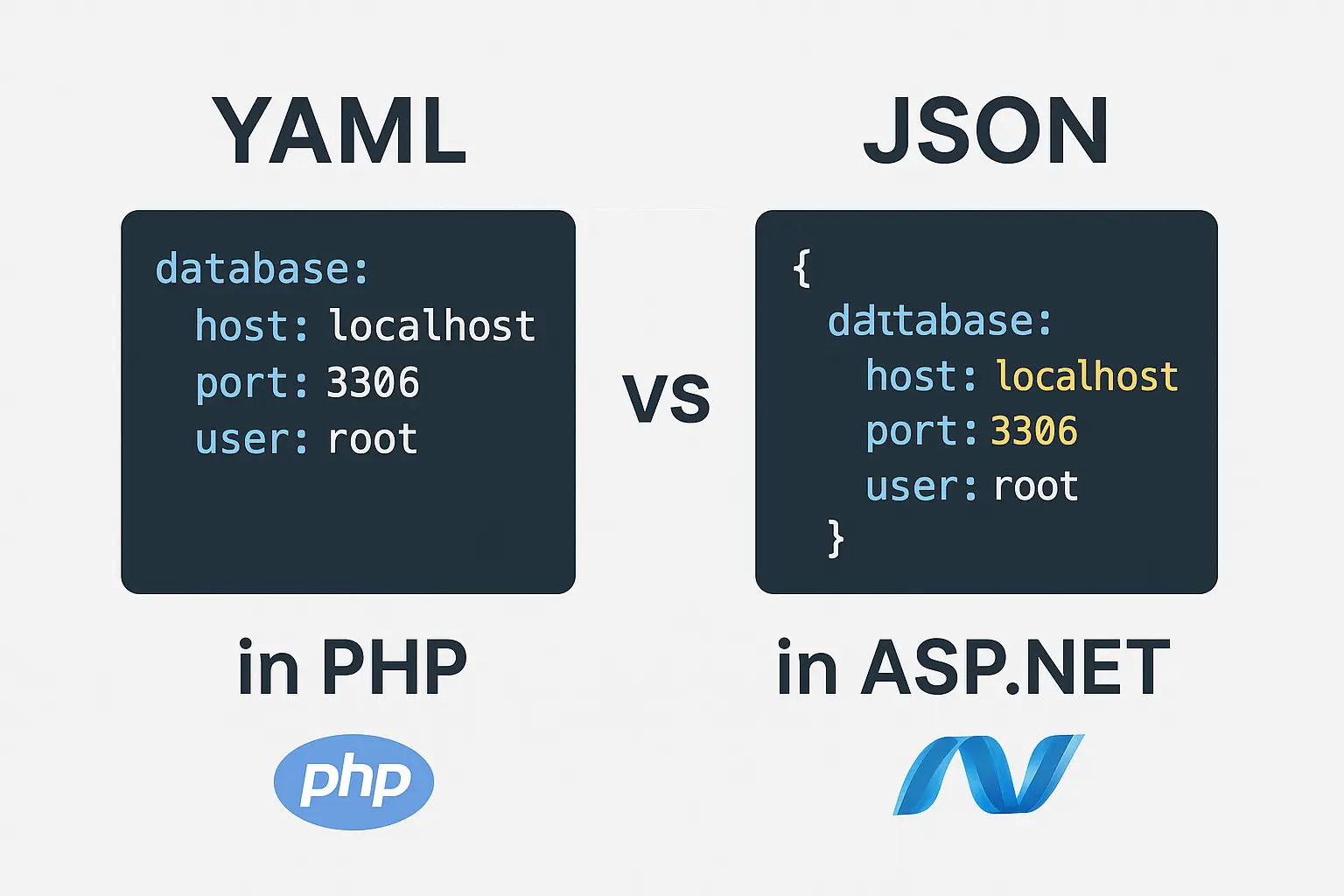
If you’re a developer, DevOps engineer, or just starting out with APIs, you’ve probably come across both YAML and JSON.
They might look similar at first glance — both deal with structured data — but they serve slightly different purposes.
JSON is great for data transfer, while YAML shines when it comes to configuration files. But let’s dig a little deeper to really understand what sets them apart and when you should use each one.
JSON (JavaScript Object Notation) is a lightweight format that’s perfect for sharing data between systems — especially over the web.
It’s clean, predictable, and easily readable by machines.
Here’s a simple example:
{
"name": "Ava",
"age": 28,
"skills": ["Python", "C#", "JavaScript"]
}
If you’ve ever worked with an API response — you’ve already seen JSON in action.
YAML (YAML Ain’t Markup Language) is designed to be more human-friendly.
It’s commonly used for configuration files where readability matters more than compactness.
Here’s how the same data looks in YAML:
name: Ava
age: 28
skills:
- Python
- C#
- JavaScript
YAML is all about clarity — it’s like a version of JSON you can actually enjoy reading.
| Feature | JSON | YAML |
|---|---|---|
| Readability | Compact and structured | Easier for humans to read |
| Syntax | Uses braces {} and quotes |
Uses indentation and dashes |
| Comments | Not supported | Fully supported |
| Use Case | Data exchange, APIs | Config files, DevOps pipelines |
| Speed | Faster to parse | Slightly slower |
| Complex Structures | Moderate support | Excellent support |
Use JSON when:
JSON’s simplicity makes it perfect for real-time applications, REST APIs, and anything that runs in a browser.
Use YAML when:
You’ll see YAML everywhere in modern DevOps — from cloud deployment manifests to CI/CD pipelines.
There’s no universal winner — it depends entirely on what you’re building.
In many cases, developers use both:
So the real answer is: use the right tool for the job.
YAML and JSON are like two sides of the same coin — both store structured data, but they serve different goals.
YAML focuses on human readability, while JSON focuses on machine efficiency.
If you’re managing configurations, YAML will make your life easier.
If you’re sending data across APIs, JSON is your go-to format.
Understanding the difference helps you write cleaner, more maintainable, and more efficient code — no matter what stack you’re working with.

